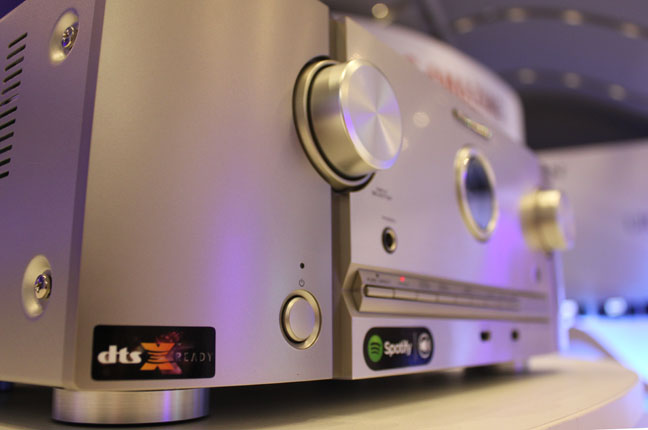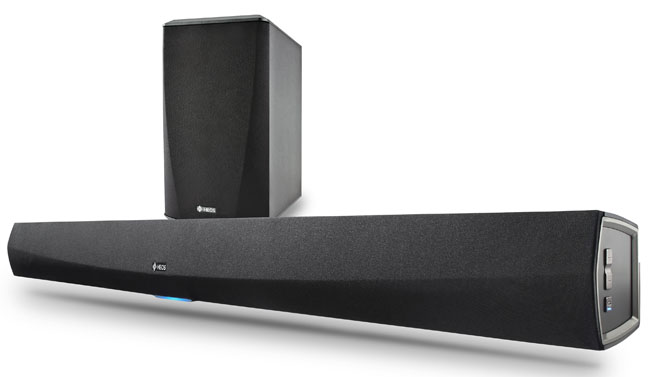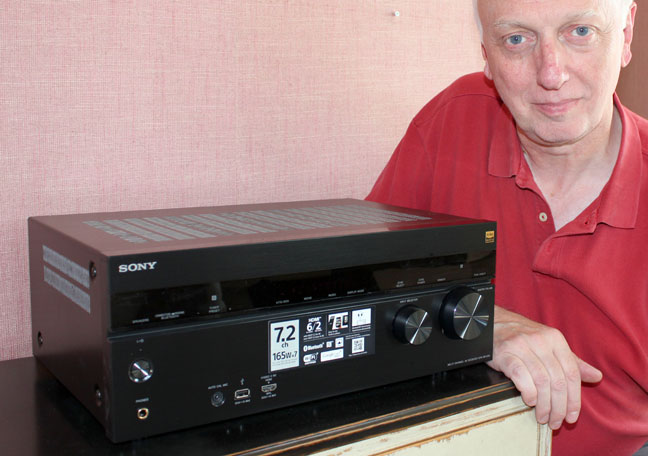This article is more than 1 year old
Denon delivers low-cost DTS:X AV kit. Finally Dolby Atmos gets some competition
Multichannel 3D audio? Sounds great to us
Auro stories
Dolby Atmos in the home actually requires quite a bit of fiddling to sound right, but at least there are Dolby-enabled speakers to help implement it in the average room. Auro 3D requires a two-tier stacked surround speaker layout, possibly augmented by a ceiling VoG (Voice of God). The height layer basically sits above your existing 5.1 layout, creating a wall of sound.
To achieve this, I had to balance speakers upon teetering boxes and disgorge webs of speaker cable. It looked as if someone had pranked my listening room. The irony, of course, is that it sounded bloody fantastic. While I really didn’t think it brought much to the movie party using native content from an Auro 3D test disc, creative music-only mixes were another matter entirely.

Marantz SR5010 DTS:X 7-channel AV receiver
At least Auro-3D can be heard. Despite announcing a small armada of DTS:X hardware, the actual firmware remains mysteriously elusive, so there were no demos of the system to be had. The thinking seems to be it’ll land around August.
Sister brand Marantz had a similar updated home cinema range in Monte Carlo offering five new models, starting with the slimline NR1606 receiver, priced at £559, through to the £1,399 125W per channel Auro-3D upgradable SR7010, due in September.
Denon also used the showcase to expand its HEOS multiroom wireless audio family. New this summer is HEOS HomeCinema, a £599 soundbar and wireless subwoofer combo which when not adding extra welly to the telly, doubles as another networked multiroom speaker. As yet none of the new receivers from Denon feature HEOS functionality but that feature seems almost a formality.

Denon Cinema bar HEOS wireless audio
Curiously, one big AV receiver brand that doesn’t seem so enamoured of DTS:X, or Dolby Atmos for that matter, is Sony. It recently launched the STR-DN1060 and STR-DN860 receivers, neither of which support the new sound formats. Conversely they do form part of the brand’s new Google Cast-based multiroom ecosystem – yes, another one – which also covers standalone players and soundbars.
When quizzed about the missing codecs, Sony spokesman Eric Kingdon told me: “The reason they’re equipped on those models is because those receivers are targeted at a very price conscious sector. If we were to do it [Atmos, DTS:X] you would most likely see it on our premium ES series first. That’s all I can tell you right now…” So IFA then, Eric?

Sony Europe's Senior Technical Marketing Manager Eric Kingdon with a DN860 AV receiver
Interestingly, Sony suggests that multiroom is a bigger attraction than 3D audio.
“We know from research that many buyers of seven channel AVRs don’t use all seven channels,” says Kingdon. “That’s why manufacturers make these receivers bi-ampable or second zone capable. But when you go to another level in terms of speaker requirements, where to put them and how many, that’s a big ask. Which is why we’ve chosen to make these particular products multiroom capable. That is our main priority.”
By being the odd man out in the home cinema room, Sony could actually be playing the smartest card. Bringing traditional AV receiver components into the multiroom wireless arena could well prove be far more appealing (and useful) than throwing yet more speakers into the (sound) mix. ®
Steve May is a veteran AV journalist and senior editor at Inside CI.
